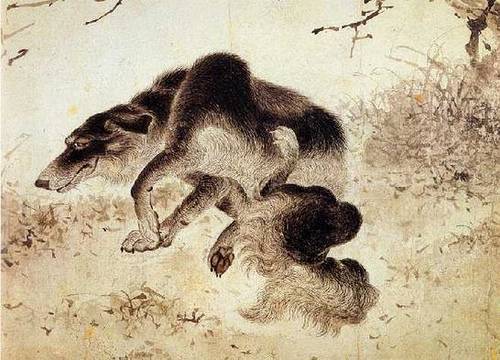
acnestis
n. that part of an animal’s skin that it cannot reach to scratch

acnestis
n. that part of an animal’s skin that it cannot reach to scratch
Excerpts from concert reviews in London’s Harmonicon:
June 1823:
Opinions are much divided concerning the merits of the Pastoral symphony of Beethoven, though very few venture to deny that it is much too long.
July 1825:
[Beethoven’s Seventh Symphony] is a composition in which the author has indulged a great deal of disagreeable eccentricity. Often as we now have heard it performed, we cannot yet discover any design in it, neither can we trace any connexion in its parts. Altogether it seems to have been intended as a kind of enigma — we had almost said a hoax.
June 1827:
[Beethoven’s Eighth Symphony] depends wholly on its last movement for what applause it obtains; the rest is eccentric without being amusing, and laborious without effect.
April 1825:
We now find [the length of Beethoven’s Ninth Symphony] to be precisely one hour and five minutes; a fearful period indeed, which puts the muscles and lungs of the band, and the patience of the audience to a severe trial.
“But how did you get to understand Beethoven?” wrote John Ruskin to John Brown in 1881. “He always sounds to me like the upsetting of bags of nails, with here and there an also dropped hammer.”
One of Robert Benchley’s movie shorts required that he be suspended above a street in a tangle of telephone wires.
While waiting for the camera, he said to his wife, “Remember how good at Latin I was in school?”
“Yes.”
“Well, look where it got me.”

You don’t hear much about the smallest Hawaiian island, Ni’ihau — it’s been privately owned since 1864, and it’s inhabited almost entirely by native Hawaiians.
So everyone was largely unprepared when a Japanese fighter plane crashed on the island on Dec. 7, 1941, after the attack on Pearl Harbor.
What followed would make a gripping screenplay. The natives took the pilot’s pistol and papers, and then endured a week’s terror as he roamed the island trying to retrieve them. Ni’ihau had no electricity or telephones, so the desperate natives tried signalling Kauai with lanterns and a bonfire and finally sent a party to row the laborious 10 hours for help. By the time they returned, their friends had killed the pilot in a climactic battle.
The pilot’s Japanese hometown has erected a stone column in his honor. It claims that he died in battle, and says “his meritorious deed will live forever.”
It can be argued that, by falling from Eden, Adam brought great good to humanity — if he’d stayed, he would not have occasioned the redemption story and the coming of the New Jerusalem.
Without man’s failure the world would not be saved.
But see Kangaroo Court.
As down the street he took his stroll,
He cursed, for all he is a saint.
He saw a sign atop a pole,
As down the street he took a stroll,
And climbed it up (near-sighted soul),
So he could read–and read “FRESH PAINT,” …
As down the street he took a stroll,
He cursed, for all he is a saint.
— Wallace Rice

On Sept. 3, 1967, every car in Sweden came to a stop at 4:50 a.m., carefully switched from the left side of the road to the right, and proceeded at 5 a.m.
The whole nation switched to right-hand traffic overnight. And to the planners’ immense credit, no fatal accidents were associated with the change, and accident rates went down in the year that followed.
ODO TENET MULUM, MADIDAM MAPPAM TENET ANNA
[Odo, holding Master Doctor’s mule, and Anne with her tablecloth]
The above line is said, in an old book, to have ‘cost the inventor much foolish labor, for it is perfect verse, and every word is the very same both backward and forward.’
— Frank H. Stauffer, The Queer, the Quaint and the Quizzical, 1882
In early 1912, writer Mayn Clew Garnett submitted a story to Popular Magazine. “The White Ghost of Disaster” told the story of the Admiral, an 800-foot ocean liner that strikes an iceberg at 22.5 knots in the North Atlantic and sinks, killing more than a thousand passengers, largely due to a scarcity of lifeboats.
On April 14, while the story was in press, the 882-foot Titanic struck an iceberg at 22.5 knots in the North Atlantic and sank, killing 1,517, largely due to a scarcity of lifeboats.
The story appeared in May.

If Martians are observing us, how can we show them we’re intelligent?
Carl Friedrich Gauss proposed marking a huge right triangle on the Siberian plain; Austrian astronomer Joseph von Littrow suggested carving a perfect circle in the Sahara and filling it with burning kerosene.
Joseph Pulitzer favored a more direct approach: He wanted to build a huge billboard in New Jersey recommending his newspaper to inquiring Martians.
He pressed the idea until an assistant asked, “What language shall we print it in?”